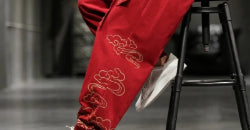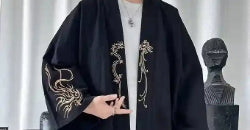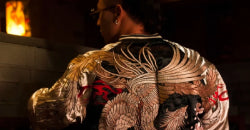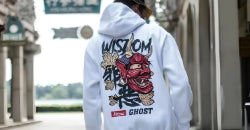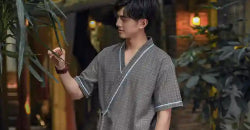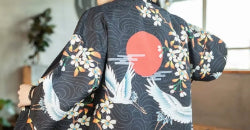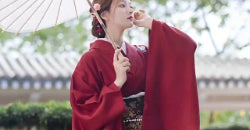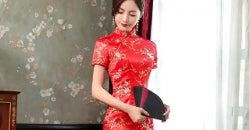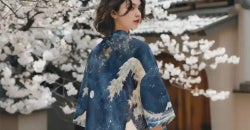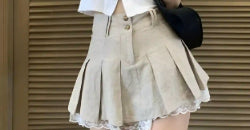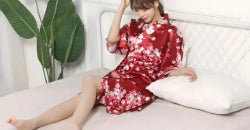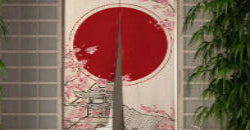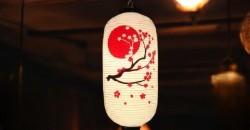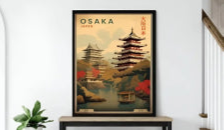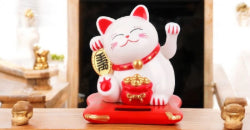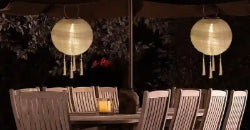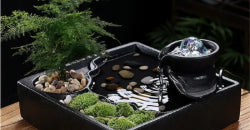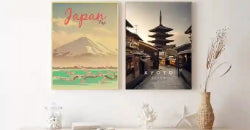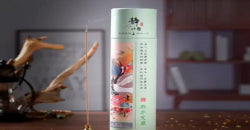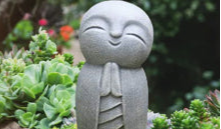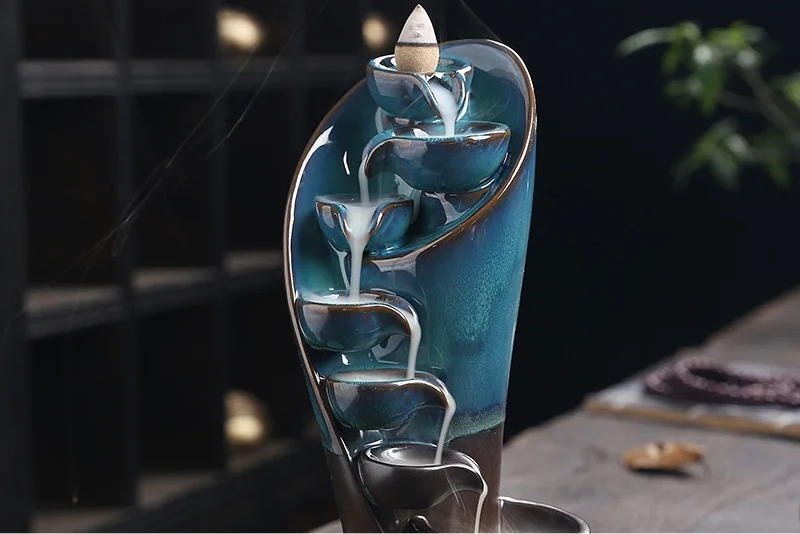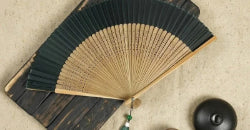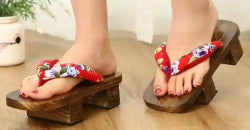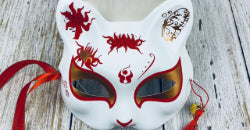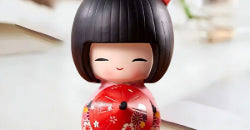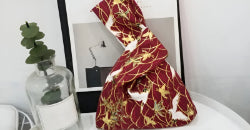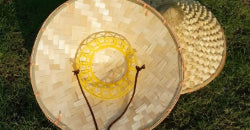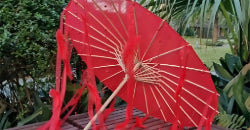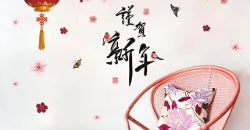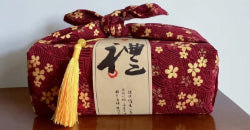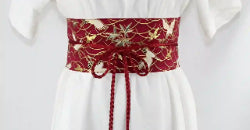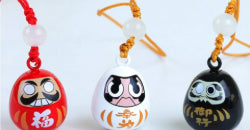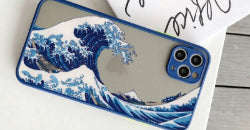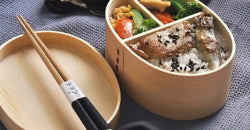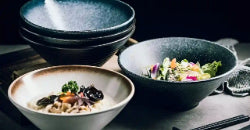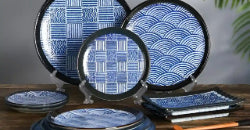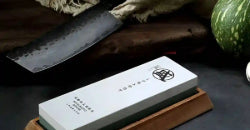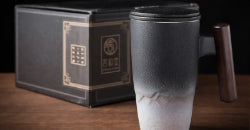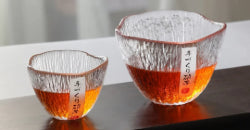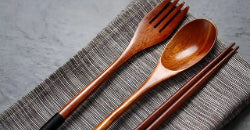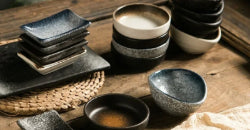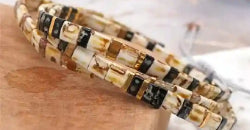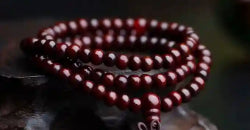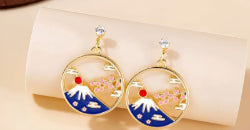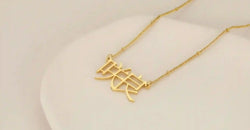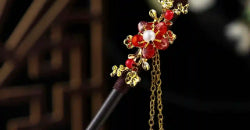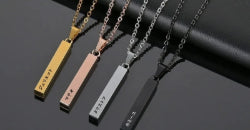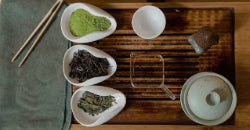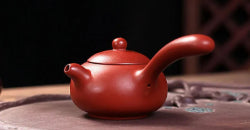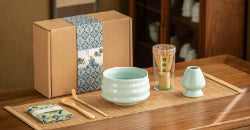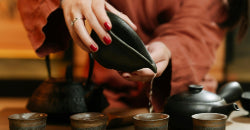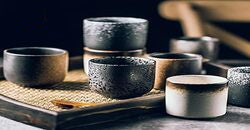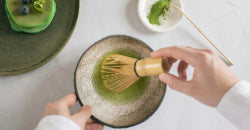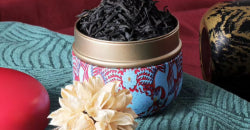Traditional Japanese Patterns: Meanings and Symbolism
Source: Freepik
Steeped in history and spirituality, traditional Japanese patterns have survived the centuries without ever losing their evocative power. Each shape, each line, each graphic repetition embodies a specific symbolism, often rooted in nature, Shinto beliefs, or Buddhism. Discover the meaning of Japanese patterns in this review.
What are traditional Japanese patterns?
Present for centuries in the Japanese art of living , traditional Japanese motifs are now attracting growing interest outside Japan, particularly in Europe. These decorative ornaments, called Wagara , occupy an important place in Japanese visual culture . They adorn artisanal tableware, folding fans, wrapping fabrics called furoshiki , and even kimonos. Often composed of subtle or vibrant colors, they combine aesthetic elegance and symbolic richness.
These patterns can be grouped into five main families, depending on what they represent. Each conveys a particular message or symbolic idea, sometimes of protection, longevity, or luck. Among the main categories, we distinguish Japanese patterns:
-
geometric;
-
floral;
-
taken from nature;
-
with animals; and
-
inspired by everyday objects.
Geometric Japanese patterns
Japanese geometric patterns , whether simple or complex, are found on a multitude of traditional textiles. They reflect both the refined aesthetic and the profound symbolism of Japanese culture. Their harmonious repetition makes them soothing and powerful motifs, highly prized in the art of kimono and Japanese design in general.
The Asanoha pattern, strength and growth in textiles
Inspired by hemp leaves, the Asanoha pattern takes the form of six-pointed stars, repeating endlessly. Before the arrival of cotton in Japan, hemp was commonly used for clothing. This vigorous and undemanding plant thus became a symbol of vitality, resistance and development . This pattern was often featured on children's clothing, with the hope that they would grow up healthy and strong. Graphically striking, the Asanoha remains highly valued for its clean look and its energetic meaning.
The Yagasuri motif, protection and luck in everyday life
This motif represents the feathers of arrows used in archery. It is regularly found on traditional fabrics , especially kimonos. It symbolizes direction, continuity, and luck. In the past, it was given to young brides to wish them stability and happiness. This motif is also associated with defense against malevolent forces . It evokes:
-
No turning back, like a launched arrow
-
Spiritual protection for the home
-
A wish for prosperity in a new beginning
The Same Komon pattern, elegance of invisible detail
Same Komon evokes the texture of sharkskin, with its multitude of small, tightly packed stitches. It is a discreet but sophisticated pattern, which was initially reserved for shoguns before becoming more widely used. Often used as a background, this pattern has no deep symbolic meaning, but its visual refinement is appreciated for dressing without weighing down. It reveals the attention to detail in Japanese textile tradition , while emphasizing elegance in sobriety.
The Shippo motif, harmony and spirituality
This circular motif, which forms petals or stars depending on the interpretation, is deeply linked to Buddhist spirituality. The Shippo alludes to the "seven treasures" of Buddhism:
-
gold;
-
money;
-
the pearl;
-
coral;
-
the crystal;
-
agate; and
-
lapis lazuli.
This motif, popular during the Edo period, symbolizes peace, harmonious bonds, and lasting relationships. Its continuous composition also evokes infinity, reinforcing its spiritual power in Japanese decorative art.
The Tatewaku motif, lightness and ascension
Tatewaku consists of wavy lines that rise vertically, like steam rising toward the sky. Long reserved for the aristocracy due to the difficulty of its execution, this motif symbolizes the elevation of the soul and the ability to rise above obstacles. It also represents fluidity of movement and a certain natural grace. Used alone or combined with other motifs, it is a visual invitation to calm and lightness in textile creations.
The Kikkô pattern, robustness and longevity inspired by nature
Inspired by tortoiseshell, Kikkô is composed of hexagonal figures often associated with other floral or symbolic motifs. This motif refers to the following qualities:
-
Longevity, because the turtle is a symbol of long life
-
Stability and balance thanks to its regular geometric shape
-
Protection, especially in samurai armor.
Its ancient use in warrior or ceremonial attire reinforces its aura of quiet strength. Even today, the Kikkô embodies a solid tradition, somewhere between nature and geometry.
Japanese patterns inspired by nature

In Japanese culture, nature deeply inspires textile art through patterns rich in symbolism and poetry. Each natural element becomes a visual language laden with spiritual or philosophical meaning . From sacred mountains to benevolent snowflakes, these decorative designs perpetuate an intimate connection with the world around us. Exploring these symbols reveals a tradition where aesthetics blend with belief .
-
Yama : Mountains represent wisdom and house the sacred spirits of Shinto.
-
Kawa : Rivers illustrate the passage of time and continuity.
-
Kumo : Clouds represent changes and heavenly blessings.
-
Yukiwa : Snowflakes symbolize the fertility of the earth.
-
Nami : Waves reflect power and respect towards the ocean.
-
Kinkakuji : The Golden Pavilion embodies ephemeral beauty and serenity.
-
Dokuro : Skulls ward off evil spirits and celebrate renewal.
Japanese floral patterns
In Japan, each flower is associated with deep meanings linked to emotions, virtues , or cultural symbols. These meanings are an integral part of hanakotoba, the language of flowers. Each Japanese floral motif tells a story and expresses important values in Japanese culture. Let's discover together the most common Japanese flowers and motifs .
Sakura: The Cherry Blossom

The sakura , also known as the cherry blossom, is among the most iconic and beloved floral emblems in Japan. Its fleeting beauty is a symbol of the fragility of life and the acceptance of the inevitability of time. It is often associated with spring, the season when the Japanese celebrate the blossoms with gatherings beneath the cherry trees. The sakura also evokes kindness and gentleness. The custom of hanami, which consists of admiring the cherry blossoms, is an opportunity to enjoy this fleeting beauty.
Kiku: The Imperial Chrysanthemum

The kiku, or chrysanthemum, is a symbol of renewal and longevity. In Japan, this flower holds a prominent place in culture, particularly as the emblem of the imperial family. It frequently appears on imperial seals and other official symbols. Often depicted during autumn, the kiku is a popular motif throughout the year and embodies timeless beauty and quiet strength.
Botany: The Royal Peony

The peony, also called the botan, is revered as the royal flower of Japan. It represents femininity, inner strength , and protection. Legend has it that the peony can repel pests, and its weather-resistant beauty makes it a symbol of dignity. Highly prized in painting and embroidery, it is often used to adorn clothing and artistic pieces .
Tsubaki: The Mystical Camellia

The tsubaki , or camellia, is a flower found in many Japanese gardens. Its petals are often depicted on kimonos and fabrics. The color of the tsubaki plays a role in its symbolism: the red camellia embodies love , the white camellia desire, and the yellow camellia expectation . This flower is also a symbol of elegance and purity, making it a popular motif in traditional Japanese arts.
Kiri: Paulownia
The kiri , or paulownia, is a rare and precious flower in Japan. Often linked to family customs , a paulownia tree is planted at the birth of a girl and its wood is later used to create precious objects. It is also a symbol of prosperity and renewal. It is more discreet than other flowers but just as significant, particularly in the decorative arts.
Nadeshiko: The Carnation
The carnation or nadeshiko is a flower representing simple, natural beauty and is often associated with pure, maternal love. It is highly valued in hanakotoba for its symbolism of understated, sincere beauty, like the ideal Japanese woman. As a floral motif, the carnation embodies simple elegance and deep affection .
Asagao: The Morning Glory
The asagao , or morning glory, is a flower that blooms at dawn and closes in the evening. This cycle symbolizes the ephemeral beauty and impermanence of life, which are very present in Japanese culture. It is sometimes stylized with a white dot in the center, representing a new beginning. This flower is associated with the hanakotoba , evoking purity and renewal.
Ume: The plum tree
The plum tree marks the beginning of spring with the brightness of its flowers. Its early bloom symbolizes rebirth , health, and beauty. Because of its first flowers of the year, this flower is also called the "flower of peace" and is often seen as a protection against evil spirits. Its sweet fragrance and delicate petals evoke the beauty of nature and feminine grace .
Japanese Patterns with Animals
In Japanese tradition, animals are more than just creatures: they embody human values, beliefs, and aspirations . Integrated into decorative motifs, they reveal a rich symbolic language transmitted through fabrics, objects, and even prints.
Tsuru: The Majestic Crane

The crane, or tsuru , is one of Japan's most iconic birds. It embodies longevity and prosperity, often depicted alone or in pairs to evoke marital harmony. According to popular belief, folding a thousand origami cranes would grant a precious wish. Its bright white plumage and elegance make it a popular motif on kimonos and decorative papers. It also symbolizes peace and fidelity in marriage, making it an element often associated with ceremonies and wishes for happiness.
Tanuki: a mischievous and benevolent spirit
The tanuki , a type of Japanese raccoon dog , is a key figure in folklore. This yokai, capable of changing appearance, embodies mischief but also luck. Its stylized features are often found in textile patterns to evoke lightness and the joy of living. It is also synonymous with prosperity, particularly in trade.
-
Symbol of transformation and cunning.
-
Good luck in business.
- Representation of generosity and abundance.
Koi: The Courageous Carp

The koi carp is another popular animal motif in Japanese culture. This fish is famous for its ability to swim against the current in rivers, making it a symbol of courage, perseverance, and determination. Koi carp are also associated with virility and success, and are often used to celebrate Children's Day in Japan.
Koi carp motifs are popular on men's kimonos and textiles used for festivals and celebrations. Due to its vibrant colors and powerful symbolism, the koi carp is also a common motif in traditional Japanese tattoos, where it represents the strength to overcome difficulties.
Tombo: The Unwavering Dragonfly

The dragonfly , or tombo , is a symbol of courage and victory in Japanese culture. Japan was once nicknamed Akitsushima , meaning "dragonfly island," because of the shape of the main island, which, when viewed from above, resembles that of a dragonfly. This insect, which never flies backward, is particularly appreciated by the samurai, for whom it symbolizes determination and bravery.
Dragonfly motifs are often used in men's textiles, particularly those of warriors and fighters, where they represent unwavering strength and an invincible spirit. This motif is also popular for summer clothing, due to the frequent presence of dragonflies in Japanese summer landscapes.
Chidori: The Intrepid Woodpecker

The chidori , a small migratory bird, embodies courage and endurance in the face of hardship. Often depicted flying over the ocean, it symbolizes the determination to move forward despite life's turbulence.
-
Symbol of tenacity and movement.
-
Associated with marine elements like waves.
- Present in kimono patterns worn during rites of passage.
Houou: The Phoenix Rising

The phoenix , or houou in Japanese, is a legendary bird of Chinese origin, which symbolizes resurrection, grace, and purity. This motif is often used in ceremonial textiles, particularly for wedding kimonos, where it represents new life and a fresh start.
Phoenix motifs are richly ornate and colorful, often used for special events celebrating renewal or transformation. The phoenix is also a symbol of peace and harmony, and is often depicted alongside the dragon, its celestial companion, to symbolize the perfect balance between yin and yang.
Usagi: The Clever Rabbit

The rabbit , or usagi in Japanese, is a very common animal in Japanese folklore, often associated with cunning and fertility. The rabbit is also a symbol of devotion and intelligence, and it appears frequently in Japanese legends and tales. In some stories, it is even associated with the moon, where it is said to inhabit and prepare mochi (rice cake).
Rabbit motifs are popular on kimonos, particularly for young girls, where they symbolize gentleness, purity, and the promise of a bright future. This motif is also often used in seasonal decorations for the Mid-Autumn Festival, a time when the moon and rabbits are celebrated.
Kame: The Wise Turtle

The turtle , or kame in Japanese, is a symbol of longevity, luck, and wisdom. Due to its exceptional lifespan and ability to protect itself with its shell, the turtle is revered as a protective animal in Japanese culture. It is often associated with deities and celestial forces.
Turtle motifs are used in textiles and decorative objects to attract good fortune and protect homes. The turtle is also a symbol of stability and perseverance, qualities valued in Japanese philosophy.
Japanese patterns inspired by everyday objects
Everyday objects are often a source of inspiration in Japanese art, reflecting deep cultural values. These motifs, though simple, carry powerful symbols, often linked to wishes for prosperity, happiness, or protection.
Sensu: The Japanese Fan
The Japanese fan , or sensu , is much more than just an accessory used for cooling off. It is a symbol of prosperity and growth. The fan, as it opens, symbolizes development and blossoming, just like a flower blooming. It is a motif frequently used in Japanese textiles, particularly on kimonos and screens.
The fan motif is often depicted alongside floral motifs or nature scenes, reinforcing its association with beauty and prosperity. It is also used in the performing arts, notably in Kabuki theater, where the fan plays a central role in the actors' dances and gestures.
Noshi: The Ribbons of Auspiciousness
The noshi motif depicts colorful ribbons tied together, often used to decorate gifts given on special occasions. In Japanese tradition, these ribbons symbolize best wishes for the person receiving the gift. Noshi is thus considered a lucky charm , often associated with wishes for longevity and prosperity.
This motif is frequently used in textiles and traditional gift wrapping, where it adds a touch of elegance and symbolism. It can also be seen on wedding envelopes or other important ceremonies, where it reinforces the wish for happiness and success.
Temari: Decorative Balls
Temari are decorative balls made from scraps of fabric, often embroidered with intricate designs. These balls, originally children's toys, have become art objects prized for their beauty and complexity. Giving a temari as a gift at New Year's is a sign of good fortune.
The temari pattern is used to symbolize creativity, delicacy, and attention to detail. It is frequently seen on kimonos, handicrafts, and even Christmas decorations in Japan. Each temari ball is unique, making it a symbol of diversity and individuality.
Tsuzumi: The Drum of Celebration
The tsuzumi is a traditional Japanese drum, often used in Noh and Kabuki theater performances. This drum, with its hourglass shape, is a symbol of joy, celebration, and festivities . In motifs, it is often depicted to evoke festive events or important ceremonies.
Drum motifs are commonly used in textiles and decorative objects, where they symbolize joy and harmony. They are also associated with festive seasons and family celebrations, bringing with them connotations of happiness and community.
Kasa: The Protective Umbrellas
Japanese umbrellas , or kasa , are traditional objects used for protection from the sun or rain. They are also symbols of protection and social status, particularly in Japanese theater and traditional culture.
The umbrella motif is often used to symbolize protection, delicacy, and elegance . It is frequently seen on kimonos, fans, and other textiles. The umbrella is also a symbol of welcome and benevolence, often associated with scenes of peace and tranquility.
Hanaguruma: The Flower Carts
Hanaguruma is a motif depicting flower-adorned carriages once used by aristocrats to move around the Kyoto Imperial Palace. This motif is a symbol of beauty, refinement, and luxury.
Hanaguruma motifs are used to evoke images of grandeur and wealth, often associated with scenes from the imperial court or noble ceremonies. This motif is also a reminder of the deep connection between nature and Japanese aristocratic culture.
What is the meaning of Japanese symbols?
Japanese symbols are rooted in various aspects of the country's spirituality and culture. They are often inspired by natural elements such as cherry blossoms (sakura), philosophical concepts such as wabi-sabi or minimalism, and religious beliefs such as Shintoism. Traditional myths, including supernatural creatures such as kami, yokai , and oni, also play a key role. These symbols are ubiquitous in manga and popular culture, conveying messages of beauty, simplicity, and a spiritual connection with nature.





